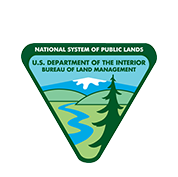Single Publication
Could not determine your location.
McDonald Fire
Unit Information
Incident Contacts
- INFORMATIONEmail:2024.mcdonald@firenet.govPhone:907-356-5511Hours:8 a.m. - 8 p.m.
McDonald Fire Update, Sunday, June 9, 2024 06-09-2024
McDonald Fire
Publication Type: News - 06/09/2024 - 11:00
Hot, dry conditions push McDonald Fire to an estimated 8,000 acres
(FAIRBANKS, Alaska) – The McDonald Fire (#119) burning 31 miles south of Fairbanks was active Sunday, growing to an estimated 8,000 acres thanks to hot, dry and windy conditions. While the winds diminished since Saturday, the warmer temperatures helped push the fire out from both flanks as it burned through stringers of black spruce. The fire has had little eastward progression and remains 7 miles west of Harding Lake and the Tanana River.
The lightning-caused fire is burning in an area with a mixture of black spruce and hardwood trees. Saturday’s 20 mph winds pushed the lightning-caused fire west and deeper in the Tanana Flats military training area. The fire is burning the southeast corner of the large training area on the west side of the Tanana River. Weather is expected to cool this week with some thunderstorms predicted to move into Interior Alaska. Temperatures will decrease by about 10 degrees starting Monday and there is a 50-70% chance of rain for the next two days.
The training area has a long history of fire activity that has reduced much of the vegetation available to burn. However, the area the fire is burning in doesn’t have any fire history.
It is burning in an area designated for limited management, meaning that unless the fire threatens property or people, it will be allowed to play its natural ecological role. If the fire threatens a nearby site of value, land and fire managers may mobilize firefighters to protect the site without stopping the wildfire’s spread. This strategy considers firefighter safety, values at risk, and impacts on the surrounding area.
Eight smokejumpers deployed to a military site at Blair Lakes Saturday to take steps to protect the military infrastructure in case it is threatened. The fire was still 1.5 miles northeast of the site. Otherwise, the fire will be monitored by routine flights conducted by BLM Alaska Fire Service Military Fire Management Zone personnel.
The McDonald Fire is one of two staffed fires in Alaska. The North Star Fire crew and two BLM AFS smokejumpers are mopping up the 3-acre Ed Berg Slough Fire (#111) burning about 11 miles north of Beaver.
As of 7:45 p.m. Sunday, 115 fires have burned about 8,000 acres. The lightning-caused McDonald Fire a looming reminder that it’s fire season in Alaska. Even though a good portion of Alaska experienced red flag conditions this weekend for hot, dry and windy conditions, there relatively few fires and with the exception of the McDonald Fire, little fire growth on existing fires.
Contact BLM AFS Public Affairs Specialist Beth Ipsen at (907)356-5510, (907)388-2159 or eipsen@blm.gov for more information.
###
Bureau of Land Management, Alaska Fire Service, P.O. Box 35005 1541 Gaffney Road, Fort Wainwright, Ak 99703
Need public domain imagery to complement news coverage of the BLM Alaska Fire Service in Alaska? Visit our Flickr channel!
Learn more at www.blm.gov/AlaskaFireService, and on Facebook and Twitter.
The Bureau of Land Management Alaska Fire Service (AFS) located at Fort Wainwright, Alaska, provides wildland fire suppression services for over 240 million acres of Department of the Interior and Native Corporation Lands in Alaska. In addition, AFS has other statewide responsibilities that include: interpretation of fire management policy; oversight of the BLM Alaska Aviation program; fuels management projects; and operating and maintaining advanced communication and computer systems such as the Alaska Lightning Detection System. AFS also maintains a National Incident Support Cache with a $18.1 million inventory. The Alaska Fire Service provides wildland fire suppression services for America’s “Last Frontier” on an interagency basis with the State of Alaska Department of Natural Resources, USDA Forest Service, National Park Service, Bureau of Indian Affairs, U.S. Fish and Wildlife Service, and the U.S. Military in Alaska.

 InciWeb
InciWeb